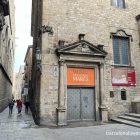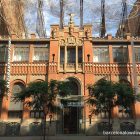The Basilica of Santa Maria del Pi is located in the heart of Barcelona’s Gothic Quarter, near Las Ramblas and the famous Boqueria Food Market.
The basilica dates back to the fourteenth century and is known for its large Rose Window, one of the largest in Catalonia. However, the main reason for visiting the basilica is its bell tower, which took almost a century to complete and offers impressive 360-degree views of Barcelona.
The basilica is surrounded by three small plazas, which were originally graveyards. In one of the plazas is a solitary pine tree from which the church takes its name. Pi means pine tree in Catalan.
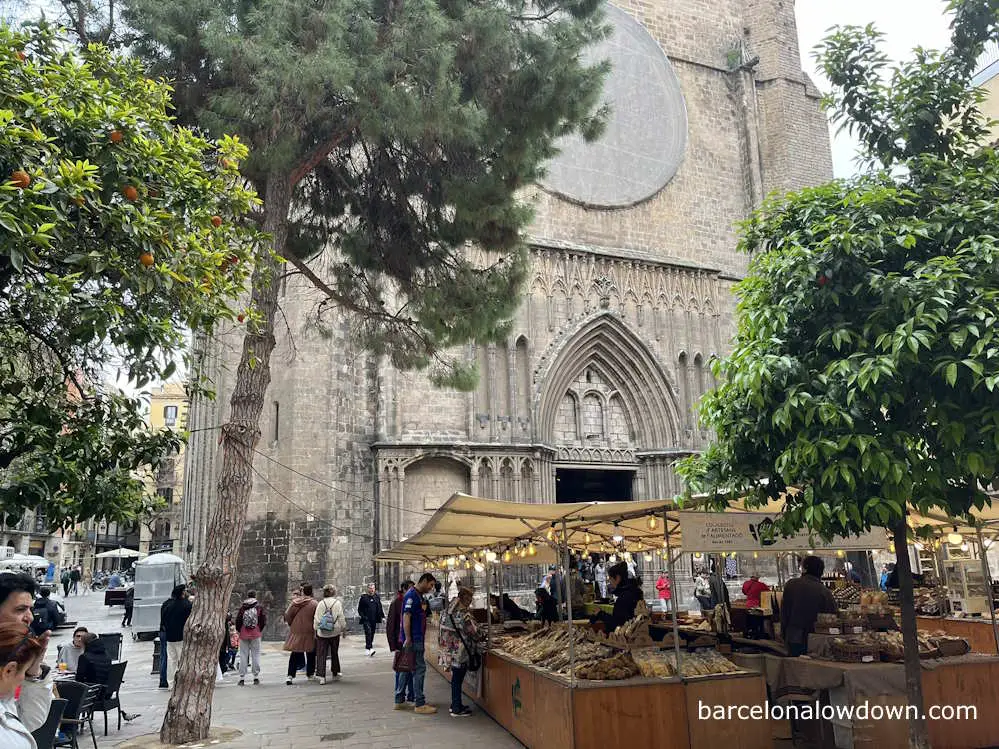
The history of the Basilica of Santa Maria del Pi
The Basilica of Santa Maria del Pi was built during the fourteenth century AD. Construction began in 1322 but was delayed by the bubonic plague, aka the Black Death, and the basilica wasn’t consecrated until 1391.
Like most churches in Barcelona’s Gothic quarter, the basilica was built to replace an earlier Romanesque church, which is believed to have been built during the ninth century. However, there are no visible remains of the earlier church, and the area surrounding the basilica has never been excavated.
The church’s octagonal bell tower was constructed between 1379 and 1453 and was funded by a donation from Pere IV of Aragon.
The basilica was badly damaged by an earthquake that shook Barcelona in 1428, then again during the siege of Barcelona in 1714 and again during the Spanish Civil War, when a fire gutted much of the church’s interior.
Legends surrounding the Basilica of Santa Maria del Pi
The basilica is associated with two popular legends, the first of which concerns the temple’s origins.
As I mentioned earlier, the earliest records of Santa Maria del Pi refer to a small Romanesque church built during the ninth century. At this time, the area where the church stands was outside the city’s defensive walls. Apparently, one day, a sailor was walking in the area when he came across an image of the Virgin Mary hidden amongst the branches of a pine tree.
Several years later, a church was built on the site and named Santa Maria del Pi in reference to the miraculous discovery. To this day, there is a pine tree in the square in front of the church. However, it isn’t the original tree and has been replaced several times over the centuries.
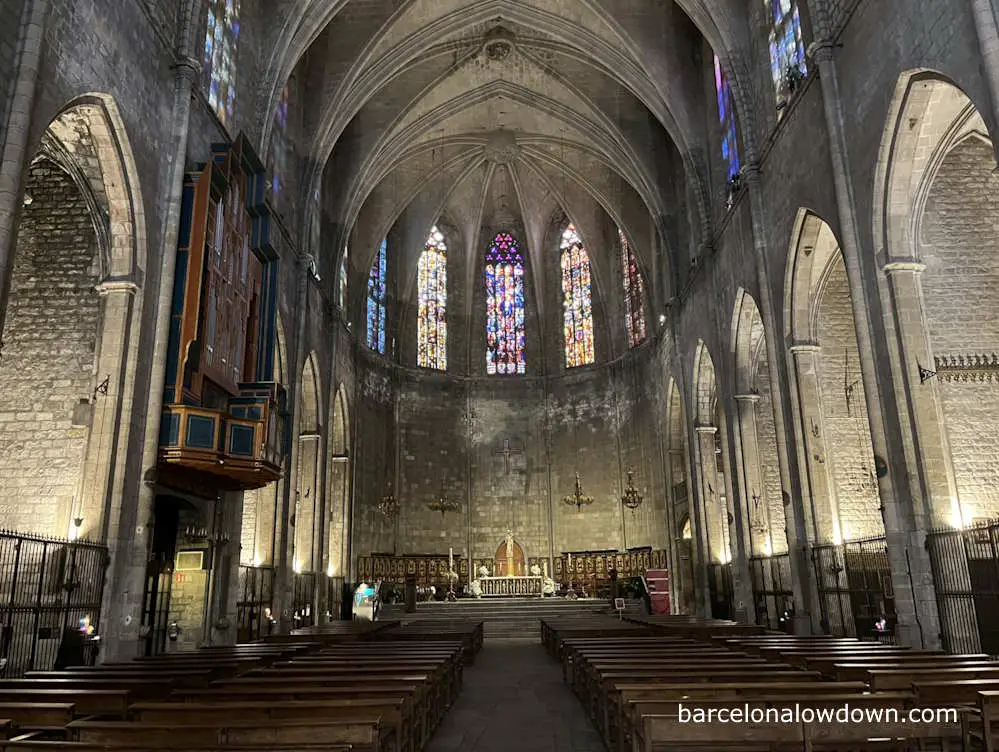
Another popular legend concerns the construction of the basilica’s bell tower, which was the tallest building in Barcelona during the Middle Ages.
Apparently, there were a series of setbacks during the tower’s construction, which was overseen by several successive architects until Bartomeu Mas finally made a pact, whereby he would give the devil his soul on completing the bell tower’s hundredth step.
Legend has it that the devil was good to his word, and from then on, the construction went smoothly. However, when the tower reached the height of the ninety-ninth step, Mas stopped working on the tower and concentrated his efforts on other parts of the church until he passed away in 1497. After his death, another architect finished the tower, free of the devil’s pact.
It is said that the devil was furious when he found out about the architect’s cunning plan. In a fit of rage, he stormed into the tower and stamped his foot on the hundredth step. This caused the step to sink downwards, making the hundred-and-first step slightly taller than the rest.
At this point, I have to admit that during my visit, I lost count and didn’t notice this difference in height. If you’ve visited Santa Maria del Pi and spotted the hundredth step, please tell us about it in the comments below.

What to see in the Basilica of Santa Maria del Pi
The basilica’s exterior is typically austere, and the only decoration is the porticoes surrounding each of the three doors leading into the church.
As you walk around the building, look out for the words PLAÇA DEL MILICIA DESCONEGUT daubed just above head height on one corner of the church. The text is said to be the oldest piece of graffiti in Barcelona and dates back to the Spanish Civil War, as explained in this post.
Inside the Basilica de Santa Maria del Pi
The giants
Beside the main entrance is a floor-to-ceiling glass cabinet where the parish giants are displayed when not participating in processions.
The nave and side chapels
Upon entering the basilica, you will find the large central nave with twelve smaller side chapels, each dedicated to a saint. Above the chapels are stained-glass windows that filter light into the building.
The Rose Window and stained glass windows
Set above the entrance to the nave is an impressive ten-metre Rose Window. The window dates back to the fourteenth century although it has been destroyed and replaced on several occasions, most recently in 1940.
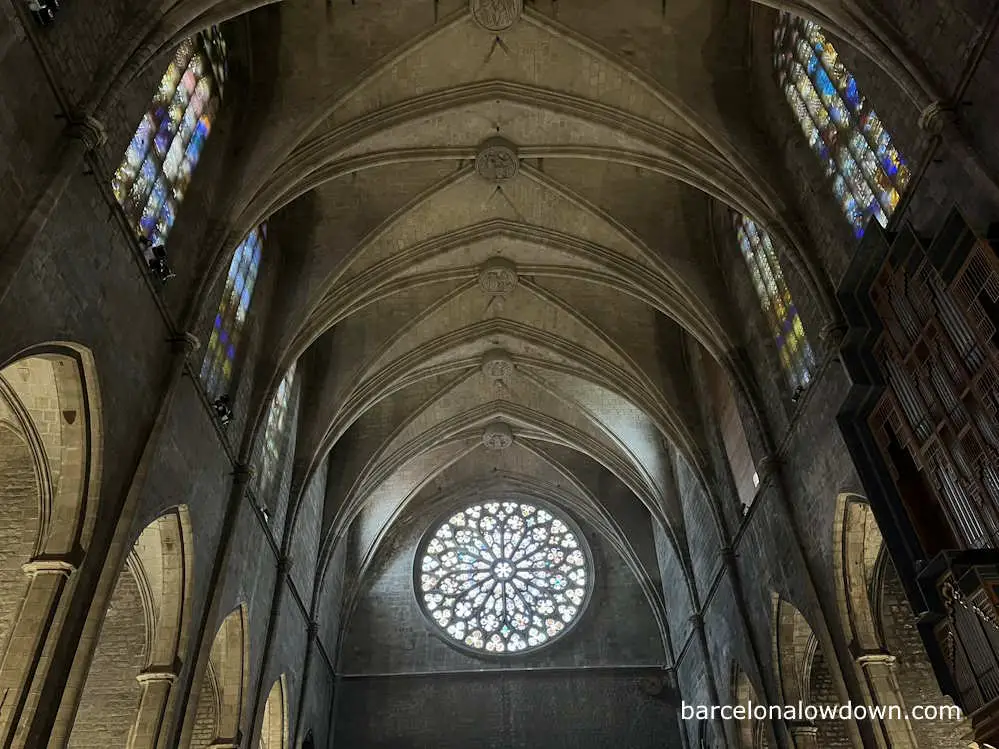
The altar and statue of the Virgin Mary
As mentioned earlier, Santa Maria del Pi has been gutted by fire on more than one occasion, and as a result, much of the original interior has been lost. The simple altar was built in 1967. Behind the altar stands a statue of the Virgin Mary created by Enric Monjo in 1973.
The crypt
To the left of the altar is the entrance to the basilica’s crypt, which is used as a museum and, occasionally, for musical recitals.
The museum
To the right of the altar, a doorway leads to the bell tower and the church’s small museum. The museum houses the basilica’s silverware and an interesting collection of dioramas and military models related to the Siege of Barcelona in 1714. Also on display are a pair of cannonballs fired at the basilica during the siege.
The gardens
Behind the basilica is a small walled garden where you can sit and wait for the bell tower tour.
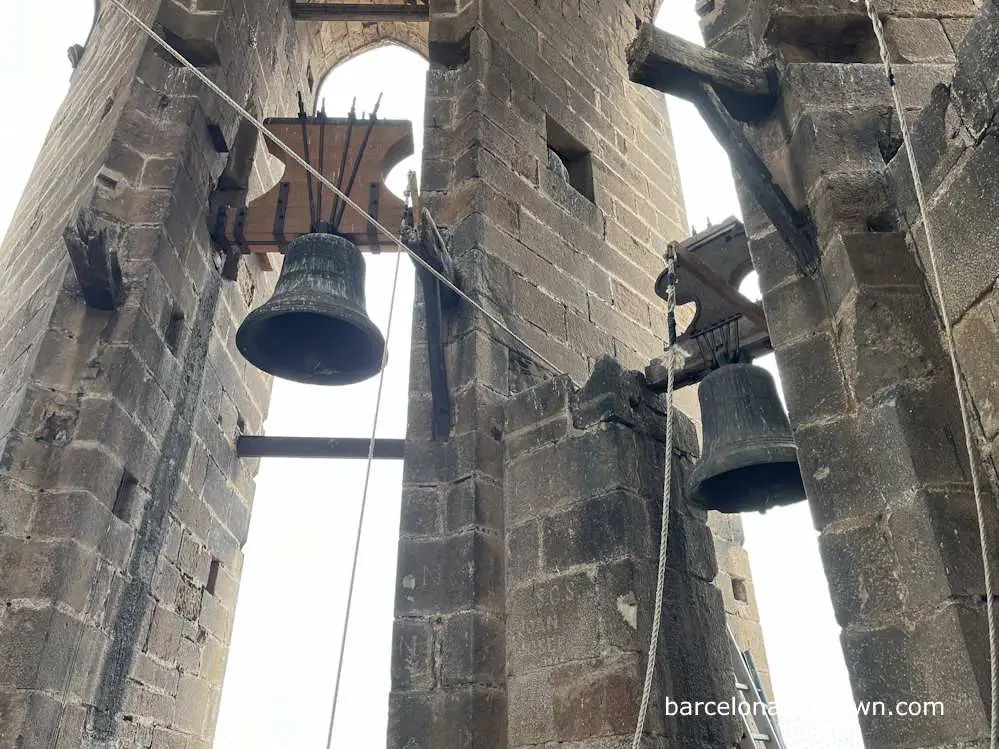
The bell tower
The highlight of visiting Santa Maria del Pi is the bell tower tour, accompanied by a guide who explains the construction of the tower and the role of each of the six bells.
The spiral staircase leading up the tower is narrow and quite steep, although there are several places where you can stop to rest on the way up if necessary.
Several churches in Barcelona, including the Cathedral, include a rooftop tour as part of the visit, and, in my opinion, the Basilica of Santa Maria del Pi has the best views.
Practical Information for visitors
Time needed to visit
You should allow between half an hour and forty-five minutes to visit the church and take the tour of the bell tower, which is included with the standard ticket. If you don’t plan to visit the bell tower, fifteen to twenty minutes will be sufficient.
If you plan to visit the bell tower, which I recommend that you do, you should schedule your visit to coincide with the times listed below.
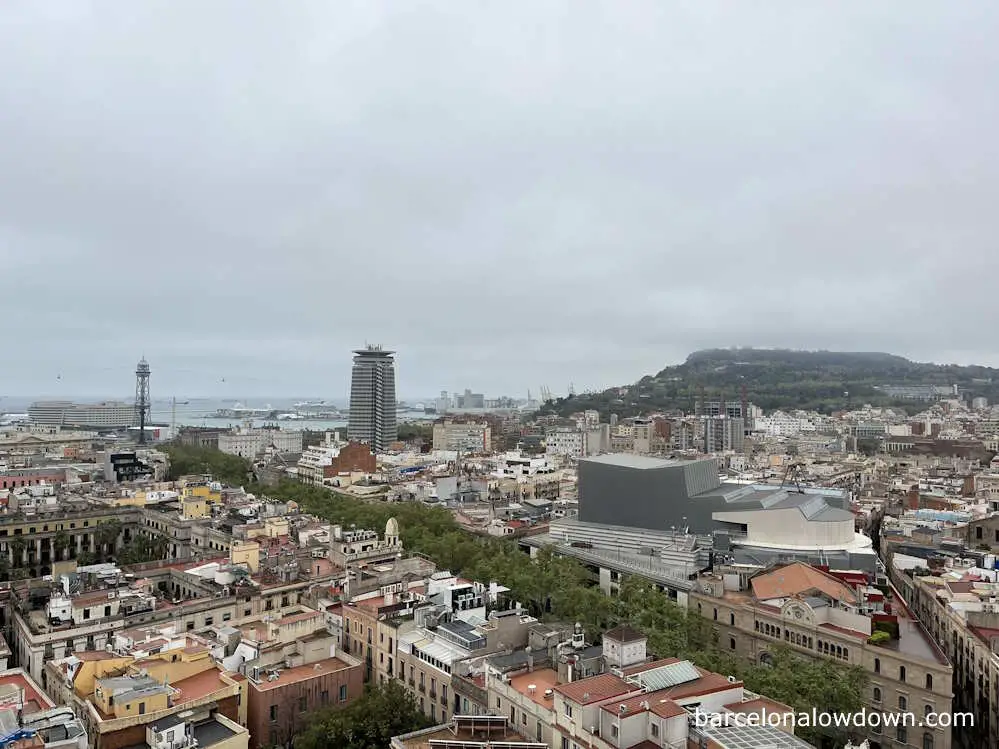
Information in English?
Yes, most displays in the church’s museum are in English, Spanish and Catalan.
Tickets
| Ticket | Price |
| Standard | €8 |
| Reduced | €6.50 |
Visiting times
| Day | Visiting times |
| Monday to Saturday | 10:00 to 18:00* |
| Sundays and Holidays | 13:00 to 16:00* |
*The door to the belltower is opened at the following times: 11:00, 12:30, 14:00, 15:30 and 16:45.
Location
The Basilica is located in the Gothic Quarter, a few metres from La Rambla.
Address: Plaça del Pi, 7, Barcelona
How to get there
The nearest metro station is Liceu, on Line 3, the green line.
Other attractions nearby
- La Rambla
- La Boqueria food market
- Plaça de Sant Felip Neri
- Barcelona Cathedral
- The Liceu Opera House
Map
Plaça del Pi, 7, Barcelona


